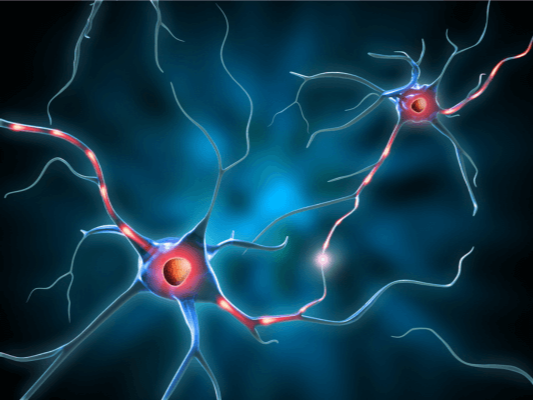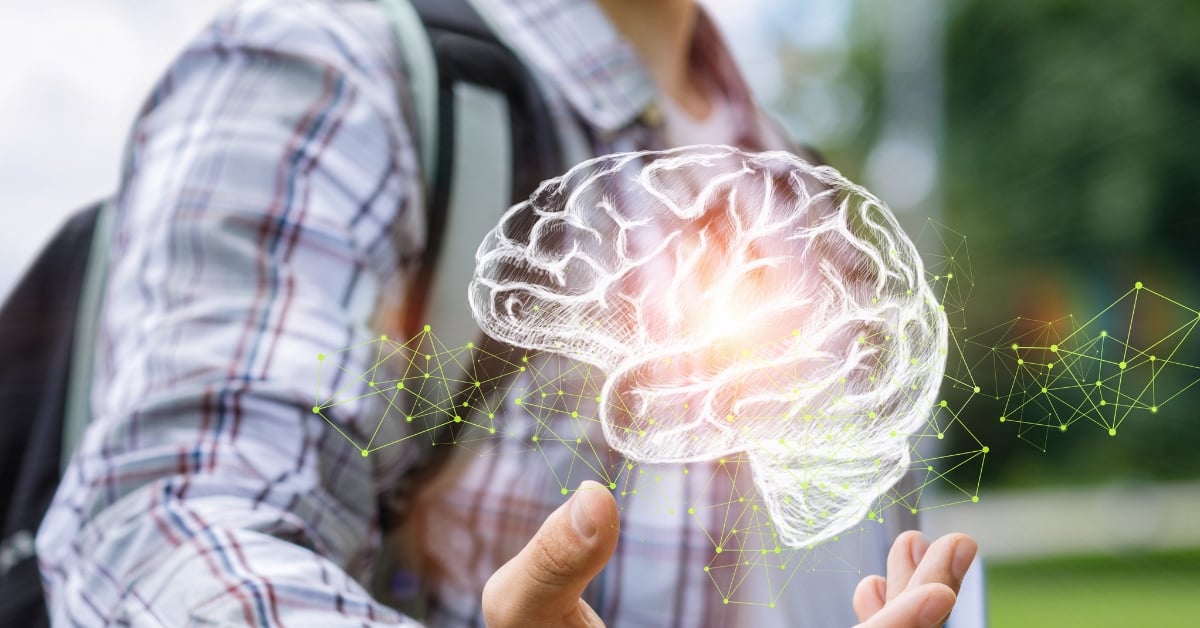Santiango Ramon y Cajal (1852-1934), Neuroscientist and Nobel Laureate"Every man can, if he so desires, become the sculptor of his own brain"
Welcome to the transformative realm of neuroplasticity - a term that has revolutionized our understanding of the brain’s capacity to change and adapt, enhancing an individual's ability to learn and perform, overcome learning difficulties and increase their academic, professional, emotional and social well-being.
The concept of neuroplasticity was first born back in 1793 when Italian surgeon and anatomist Vincenzo Malacarne studied the brains of animals and found that their brains change as a result of stimulation and training. However, this discovery was largely ignored until the last several decades.
The term was truly born in the 1900s when Polish neuroscientist Jerzy Konorski first used the term “neural plasticity” to describe this ability of the brain to change, and when Mark Rosenzweig - a psychologist at Berkeley - used the term “activity-dependent plasticity” to describe the brain’s ability to change physiologically and functionally as a result of targeted stimulation.
Neuroplasticity is now a known and understood term in science communities, but has yet to become widely adopted in educational, professional and therapeutic settings. Arrowsmith is here to change that.
This guide is an exploration into the world of neuroplasticity, from the science behind our brain’s ability to change to neuroplasticity can be a powerful ally in enhancing learning in individuals of all ages.
In this guide, we will uncover the practical applications of neuroplasticity in education, personal development, the workplace and far beyond.
Neuroplasticity - sometimes known as ‘brain plasticity’ - is the brain's ability to reorganize itself by forming new neural connections throughout life and losing those which are no longer used.
It is a response to learning and experience as well as more specifically-targeted cognitive programming.
This concept - which marks a departure from the long-held belief that the brain's structure was relatively fixed after childhood - underpins the brain’s remarkable capacity to learn new skills, recover from injury and adapt to changing environments.
Norman Doidge, MD, Author of, The Brain That Changes Itself, explaining neuroplasticity
Today, we understand that the brain can and does change continuously, adapting to new information, recovering from injury, and optimizing its operations through both structural and functional adjustments.
By encouraging positive neuroplastic change through specifically developed and targeted cognitive programming, we can improve an individual’s ability to:

Neuroplasticity represents a huge opportunity when it comes to enhancing human learning and performance. Through the sustained practice of new behaviours, and cognitive programming that specifically targets areas of an individual’s brain through working specific cognitive functions, we can harness neuroplasticity to challenge the brain to think and operate in new ways.
An important component here is our cognitive capabilities.
Cognitive functions refer to the characteristic job of a region, or network of regions of the brain, that help us perform day-to-day tasks, such as memory, executive functioning, decision making, mathematical processing, comprehension, writing and so much more. These cognitive functions operate across a continuum of capacity, from a superior level of functioning to a severe level of challenge.
In any task that we perform - whether reading, writing, socializing or problem solving - we rely on the various cognitive functions within our brain. Our capacity across these functions determines the degree to which we learn and perform with ease and independence. When we have areas of weakness within our cognitive capabilities, tasks can become difficult or even impossible to perform.
Arrowsmith calls this an individual's ‘cognitive profile’, and it shapes all areas of our life, from how we learn academically, how we behave socially, how we perform in our professional lives, as well as how we feel emotionally.
You can find out more about your own unique profile by taking this cognitive questionnaire.
What this ultimately means is Arrowsmith's neuroplastic approach can enhance an individual’s capacity to learn, overcome learning difficulties, strengthen emotional intelligence, and improve performance in the workplace by specifically strengthening the cognitive functions that are holding them back.
The result? Improved academic, professional, social and emotional well-being.
“There is neuroplasticity as a function of Arrowsmith training, which improves performance. So - Do precise Arrowsmith cognitive exercises activate and functionally change particular areas or networks of the brain? The answer is yes.”
Dr. Greg Rose
Professor Emeritus, Cognitive and Neural Sciences, Southern Illinois University School of Medicine

Leveraging neuroplasticity for brain enhancement is akin to a workout regimen for the body. Just like a bodybuilder who works out at a gym will slowly grow more muscle and become stronger through targeted exercises, a person undergoing cognitive programming will measurably strengthen their brain by spending sufficient time with exposure to and engagement with the appropriate cognitive tasks. What's more: the brain is better than a muscle. Once strong, its maintains its gain through daily intellectual activity.
To achieve this, every Arrowsmith exercise embodies the five core principles known to be essential in the promotion of neuroplastic change. Developed from decades of neuroscience research, these principles enable individuals to strengthen their brain and improve their cognitive capacity:
Neuroplasticity isn’t necessarily good or bad, it’s simply our brain’s ability to change for better or worse. The neuroplastic nature of our brains is with us for life, and there are many different things that impact the effect neuroplasticity has on our brain.
Lifestyle choices play a significant role - nutrient-rich diets, cardiovascular exercise, adequate sleep and mindfulness practices like meditation have all been shown to contribute positively to the brain's plasticity, while other lifestyle choices have proven to have a negative neuroplastic impact.
That’s why for optimum brain performance and to better strengthen our brains, it’s possible that we can increase positive neuroplasticity by making lifestyle changes.
Factors that positively impact our brain’s neuroplasticity:
Factors that negatively impact our brain’s neuroplasticity:

The amazing thing about our brain's ability to change - it never ends. At any time in our lives, from early grades in school to our senior years, neuroplasticity can be harnessed. Significant improvements can be made, profoundly changing the quality of our lives - at any age.
The effects of neuroplasticity span across the entire human lifespan. For as long as we are alive, our brain is constantly changing and adapting to new stimuli.
“For a long time, it has been assumed that brain plasticity peaks at a young age and then gradually decreases as one gets older. This is also underscored by the expression that one cannot teach an old dog new tricks, implying that people who have become used to doing things in a particular way will not easily abandon their habits and change their behaviour. Interestingly, thanks to tremendous advances in medical imaging techniques for assessment of brain structure and function, mounting evidence for lifelong brain plasticity has been generated over the past years.”
Reference: Aging and Brain Plasticity
That means that our brain’s plasticity can be optimized and harnessed to improve performance across all stages of life - from childhood and adulthood, and well into an individual’s advancing years.


We all have our own unique cognitive profile, made up of cognitive functions that operate somewhere along the continuum of strong to weak. While this profile determines how easy or difficult certain types of learning are for each of us, Neuroplasticity offers us the opportunity/chance to improve our ability to learn.
This is important when it comes to education. By using the principles of neuroplasticity to target, and improve specific cognitive functions - a process known as cognitive enhancement - we can strengthen a person’s ability to learn in the classroom and throughout their life.
Yet traditional education doesn’t typically take our brain’s neuroplasticity into account.
While schools and other educational facilities now recognize that learners learn differently, the educational world still views each learner as a relatively fixed system. They provide accommodations to give learners who are struggling workarounds, but they don’t strengthen the brain. The learner is left with an unchanged brain and the need to cope with their learning challenges beyond the classroom.
Arrowsmith knows the brain can, and should be, added to the Education Equation. That is, that schools can use the power of neuroplasticity to profoundly change their students' learning experiences.
Every individual learner has a unique cognitive profile due to their combination of cognitive strengths and weaknesses, which shape how we learn academically, socially, emotionally - and every student deserves the opportunity to strengthen those cognitive capabilities.
You can learn more on this topic on our blog, Building the 21st Century Brain Through Positive Neuroplasticity.
By targeting specific cognitive functions intentionally, Arrowsmith can strengthen the brain through cognitive programming to enhance a student’s fundamental capacity to both learn and perform in a range of settings.
The end result is a brain that is honed to think critically, collaborate with peers, reason, be empathetic, be curious, be agile and adaptable to meet novel challenges and generative creative solutions.
If you would like to explore this subject in more detail, please download our free webinar series “Shaping Our Brain - How Neuroplasticity Can Enrich Our Lives”.




Mental health is defined by the World Health Organization (WHO) as: “a state of well-being in which every individual realizes his or her own potential, can cope with the normal stresses of life, can work productively and fruitfully, and is able to make a contribution to her or his community.”
The origin of mental health issues is an incredibly complex one, but there’s no doubt that a component of our social and emotional well-being comes from our cognitive capacity. Our brains shape our understanding of ourselves, of others, of our world and our relationship to that world.
Our core brain processes - those responsible for decision making, comprehension, reasoning, judgement and non-verbal processing - are directly related to our ability to cope with the stresses of everyday life, and therefore have a significant impact on our overall mental health.
When our cognitive capabilities are underperforming, our brains prevent us from achieving what is considered a “healthy state of mind”. When individuals are challenged by everyday tasks, they typically turn inwards and struggle with their mental health.
The impact of weak cognitive capacity can lead to:
While the determinants of mental health are complex, there is evidence that building a stronger brain can help to improve an individual’s well-being.
Neuroplasticity gives us the opportunity to implement cognitive programming that strengthens weak areas in an individual’s cognitive capacity. A stronger cognitive profile leads to functional, behavioural and emotional changes that promote a stronger mental health profile.
"It has been my pleasure to know the work of Arrowsmith in a professional capacity through sharing some of my patients who also require help with learning disabilities and cognitive difficulties. The results of this work made a significant difference in the ability of those patients to use psychotherapy with its implied need for abstracting ability and language use. It was also a pleasure to see those people improving in their academic performance as a result of their improved cognitive ability. Whenever I have a case that in my opinion requires assessment and/or treatment of learning difficulties, I refer them to Arrowsmith in view of the proven effectiveness of their methods in dealing with this type of problem."
Ricardo Pinto, M.D., D.Psych., F.R.C.P.(C)
Psychiatrist-in-Chief, St. Joseph’s Health Centre, Toronto, Canada
Dr. Sheila Furey, a Psychiatrist in Virginia, U.S. speaks to the power of this work.

Through harnessing the power of neuroplasticity, the Arrowsmith Program, Arrowsmith School and Arrowsmith Providers have strengthened brains, created new realities and transformed the lives of individuals across all stages of life.
Here are some real-life success stories.
‘When my son, Kareem, was four-years-old, he struggled to cope with the mainstream academic program. His first symptoms were difficulty following through on instructions and motor coordination (not able to follow gym class or stay in the queue with other children on outings).
Kareem would always be out of place, or off task. The school he was attending in London at that time told us they were unable to accommodate him because the number of students in a class (24) would not allow the teacher to have the extra time required to meet his learning needs. They advised us to look for a school for ‘special kids’. Here started our long road in search of a solution.’
Watch an animated film inspired by Rita’s journey of discovery that led to the Arrowsmith Program and ultimately the creation of the Cognitive Enhancement Centre – Geneva.
Lennie, 25 years old cannot organize his life – let alone his bedroom. Unable to focus or prioritize, he allows his driver’s licence and passport to expire, he ignores warning letters from the university registrar about required courses and must study an extra year to attain his degree in psychology. He works as a waiter, his nights consumed by video games, his days by sleep. And yet Lennie is smart, athletic, charming, funny and well liked. He is adrift and overwhelmed. His parent’s explanation which Lennie has internalized - “He’s lazy.”
On completing The Arrowsmith Cognitive Assessment, Lennie’s profile shows four deficits, all of them mild but all “high order” executive functions, and all conspiring to keep him drifting and unable to mobilize his talents. Imagine a sports car with a high-performance engine but missing its transmission: the car was going nowhere. Testing of Lennie also revealed extraordinary strengths in spatial and mechanical reasoning and other right hemisphere functions, which delighted him for no one had ever told him that.
Lennie spent a year at Arrowsmith. He was not a model student: at first he was often late or absent. The deficits had established patterns of behavior that were slow to dissipate. Lennie focused on programs designed to rewire his brain to build the cognitive capacities underlying mental initiative, organization, logical reasoning, problem solving and strategy generation. Lennie later described it this way, “I began to organize my thoughts more effectively, and to plan ahead: First a few weeks ahead, then a few months ahead. For the first time in my life I had real long term goals and was able to take steps towards achieving them.”
Lennie recounts the day he came to school looking tired, with bags and dark circles under his eyes. Something, he said, had changed and he could feel it. “I am now compelled to organize my room, my life,” he told me. “I see what needs to be done and instead of procrastinating, I feel a compulsion to set things right - in the moment.” At last, engine and transmission were coupled and the newfound acceleration was truly exhilarating.
Near the end of that year, Lennie took aptitude tests that pointed to a career in industrial design. What followed was a four-year degree in that field, two major prizes on graduation day plus three more in a province-wide design competition, and multiple job offers in his field.
Today he is a happy young man and fully engaged in his life and work. For years he flew under the radar. Parents, teachers, friends, Lennie himself: none suspected what was holding him back: his own brain. Nor could they imagine what would put him right: his own reworked brain.
Matt was considering dropping out of high school because of his learning challenges. His parents convinced him to give Arrowsmith a chance for his final year of high school. He agreed.
“As a teacher, I have known Matt since he was in my first-grade class, middle school science class and I have been his tutor throughout high school. When he mastered the first level of one of the Arrowsmith cognitive exercise, he cried tears of joy. Reading clocks was previously impossible. It was a huge confidence booster. According to Matt, being in the program brings him peace and he enjoys the cognitive exercises for that very reason.
We have a therapy dog in the Arrowsmith program and she is even noticing changes in Matt. When the year began she was reluctant to spend much time around Matt. Today she lays next to him and seeks his affection willingly. Matt has recently been accepted into a law enforcement program geared towards high schoolers who are interested in a future career in law enforcement. He has to take lots of notes and follow lectures in this program. This is something he wasn’t able to do before the Arrowsmith Program.
His parents are reporting a happy son who is looking forward to his future. They say he is doing chores and helping with the family business which is something he never had an interest in before. He has more initiative, focus, and peace of mind. His communication skills have also improved. I am so thankful for the Arrowsmith Program and saving this at-risk teen.”
Frank, a very successful entrepreneur, started to notice some slippage in some of his cognitive functions. His son had benefited from Arrowsmith, so he decided to enrol. He noted, “my thinking had gotten fuzzy, my memory had slipped, my analytical capacities had declined and concentrating on a thought to its conclusion took more effort. My meditation practice had deteriorated to what could best be described as mediocre.”
He started working on the exercise to reverse his decline in mental acuity. He was concerned, would he be bored, and the answer was no -”the exercise draws you in. You are constantly trying to beat your last record and as you get better, you enjoy the progress. You also learn about yourself - you work with your emotions to avoid them getting in the way of your performance and you also notice your brain functioning better which is a great motivator.” Frank observed many changes - his typing became quicker and more accurate, he was more focused, he had a feeling of space compared to being in a fog before, his ability to follow and express ideas sharpened and in discussions, he felt calmer and more willing to consider other points of view. As a result he took on some new challenging projects he might have previously resisted.
The most dramatic and transformative change he reported was an increased ‘joie de vivre’ that permeates all aspects of his life. Each morning he now looks forward to what the day will hold. Frank says, “I remember that we observed exactly this change in my son and in other Arrowsmith students. I find it quite remarkable that even at my age this is still possible.”

